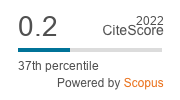The Roots of Creativity: Investing in Cultural Transmission
DOI:
https://doi.org/10.19272/202300701006Keywords:
Cultural Exaptation, Cultural Neural Reuse, Social Learning, Cultural Evolution, InnovationAbstract
This paper will enquire into the issue of human creativity from the viewpoint of cultural evolution and the mechanisms underlying it. Creativity certainly has an individual and subjective dimension, but its social dimension is more and more acknowledged. This social dimension, moreover, is the one that can be addressed from the standpoint of cultural evolution. Current models in cultural evolution suggest it cannot be reduced, in its pace and fundamental mechanisms, to purely biological, genetic evolution. Genuinely cultural dynamics and drives boost the process. After presenting a specific model of cultural evolution based on the mechanisms of cultural exaptation and cultural neural reuse, the paper will focus on the importance of cultural transmission strategies (from various forms of social learning to proper teaching). The point the paper will make and argue for is that investing in transmission strategies is the root of creativity in cultural evolution. Dedicated transmission strategies actually create the conditions for having innovation in cultural evolution, hence prompting creative processes, by ensuring the availability of elements to be combined, integrated and repurposed by cultural exaptation. Finally, the ideas that transmission strategies may prompt the genuinely social dimension of creative processes and the possibility for innovations to go beyond the immediate adaptive value will be briefly discussed.



